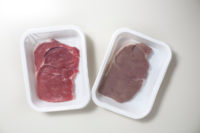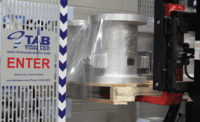Stretch Wrap Is Top-Selling Category in Plastic Protective Packaging Market
The plastic protective packaging market is projected to pass 9 million tons in 2019, according to a new study by Fact.MR. This is due to the focus of manufacturers on streamlining and optimizing plastic protective packaging, to advancements in plastic properties in line with reduced waste.
Consumer inclination toward online shopping has witnessed a dramatic rise in recent years, which has boosted growth of the e-commerce sector. Sensing the role of protective packaging the overall end-user experience, leading players in the plastic protective packaging market are focusing on easy-to-use designs, along with consistent branding activities. The study finds that plastic protective packaging market players are moving ahead of the one-size-fits-all approach, directing their focus toward offerings solutions that suit well with unique physical properties of goods, along with developments in characteristics.
Constant rise in e-commerce has also meant that manufacturers are putting more efforts on new product developments and innovations. Online retailers are using automated packaging machines to integrate air cushions in package, while small businesses with limited access to shipping and major distribution facilities are using plastic mailers due to the cost-efficiency.
According to the report, the demand for stretch wrap will remain relatively larger in light of its better recyclability and dust, moisture and tamper resistance. Sales of the LDEP resin-based stretch wrap are expected to reach 3 million tons in 2019, which can be attributed to its amenability to heat shrinking, and high clarity. As well, better resistance to impact, moisture and chemicals, along with recyclability has resulted in the wide application of LDPE resin in production of stretch wrap. LLDPE resin has also increased in plastic protective packaging as it is a cost-effective alternative, and offers high strength in various conditions.
In response to growing demand for eco-friendly packaging, a majority of retailers are focusing on streamlining their packaging division with sustainable and eco-friendly solutions. This has resulted in the shift from plastic packaging to paper bags and paperboards made using recycled materials. With an aim to provide sustainable and affordable packaging across various industries, the use of bioplastics has increased in recent years. Bioplastics such as polythene made from sugar cane have emerged as highly preferred substitute for oil-based equivalents for the protective packaging where robustness and high-durability is vital.
Looking for a reprint of this article?
From high-res PDFs to custom plaques, order your copy today!





